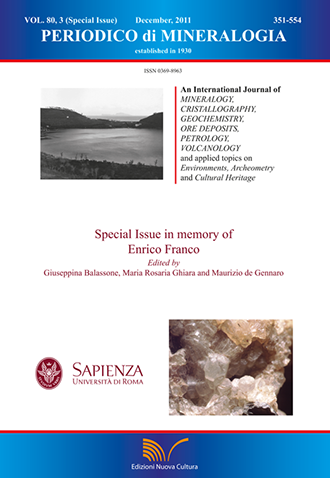Contribution to the knowledge of ancient Roman seawater concretes: Phlegrean pozzolan adopted in the construction of the harbour at Soli-Pompeiopolis (Mersin, Turkey)
DOI:
https://doi.org/10.2451/2011PM0031Keywords:
Ancient Roman harbours, hydraulic seawater concretes, pozzolanic mortars, pulvis Puteolanus of Vitruvius, ROMACONS project, Yellow Neapolitan Tuff (NYT)Abstract
This study deals with the characterization of ancient seawater concretes from the Roman harbour of Soli-Pompeiopolis, 1st century B.C., at Mersin in Turkey, drilled by the ROMACONS (Roman Maritime Concrete Study) team in 2009. This research activity was performed in collaboration with the Laboratories Department of CTG Italcementi Group and the Earth Sciences Department of the University “Federico II” of Naples. Results confirmed that the Roman engineers extensively used coarse tuff aggregate, lime hydrated in seawater, and pozzolanic volcanic fine sand, the so-called pulvis puteolanus of Vitruvius’s treatise De Architectura (1st century B.C.). The typical mineralogical association of phillipsite > chabazite > analcime, in particular points out the provenance for the tuff aggregate from the Yellow Neapolitan Tuff (NYT) formation, which is connected to the Campi Flegrei volcanic activity, dated back to 15.000 years ago. As far as the fine pozzolanic sand, of which just some scoria relics have been observed, can be ascribed to the same formation, or, probably, to the pozzolan stricto sensu pyroclastic flow from the Campi Flegrei area, as well. EDS microanalyses of different phillipsite crystals showed that the content of major alkaline and alkaline-earth metals was very close to those of phillipsite crystals from NYT, with K higher than Na and Ca, as previously reported in the literature. This fact clearly attests that zeolites were not involved in cation exchange processes within the seawater, despite of their long time curing - approximately two thousand years - in the marine environment.


